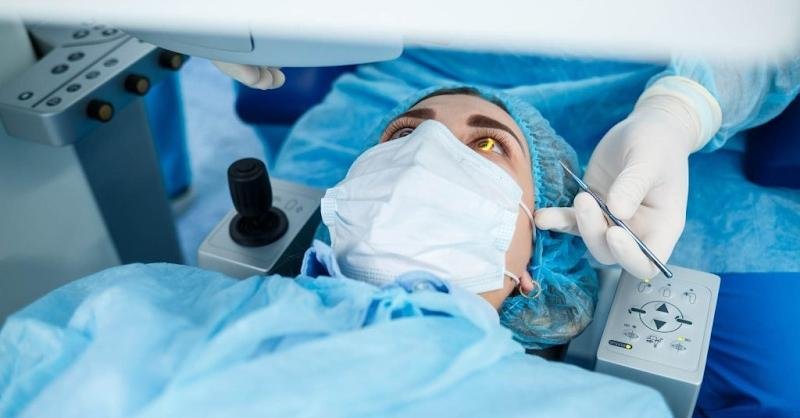Cataract surgery has long been heralded as one of the most effective and transformative procedures in modern medicine. With over 95% of patients experiencing improved visual acuity and serious complications occurring in less than 1% of cases, the surgery’s success rate speaks for itself.
However, as technology advances, so does the potential to enhance patient outcomes even further. In 2025, the focus has shifted to fine-tuning vision after cataract surgery, with innovations like Light Adjustable Lenses (LALs) paving the way for unprecedented levels of precision and personalization.
The Role of Light Adjustable Lenses (LALs)
One of the most groundbreaking developments in cataract surgery is the introduction of Light Adjustable Lenses (LALs). Unlike traditional intraocular lenses (IOLs), which offer a fixed prescription determined at the time of surgery, LALs allow for adjustments postoperatively. This innovative technology gives patients and surgeons the ability to refine visual outcomes in the weeks following the procedure.
The process involves implanting the LAL during cataract surgery and then using a series of ultraviolet (UV) light treatments to modify the lens’s prescription. These non-invasive adjustments can correct residual refractive errors, such as nearsightedness, farsightedness, and astigmatism, ensuring that the final vision is tailored to the patient’s specific needs.
Advantages of LAL Technology
The benefits of Light Adjustable Lenses are multifaceted, offering significant improvements over traditional options:
- Customized Vision: The ability to adjust the lens after surgery allows for personalized corrections, accommodating individual visual demands and preferences.
- Reduced Dependence on Eyewear: Many patients report a reduced need for glasses or contact lenses following LAL adjustments, which enhances quality of life.
- Improved Patient Satisfaction: By addressing residual refractive errors, LALs significantly boost patient confidence and satisfaction with their surgical outcomes.
Leading institutions, such as UCSF Health, have already begun incorporating LALs into their cataract surgery repertoire, with usage rates reaching 10-20% of all procedures. As this technology becomes more widely available, its adoption is expected to grow exponentially.
The Statistics Behind the Success
The success of cataract surgery has consistently been a strong point in ophthalmology, but advancements like LALs elevate the bar even higher. The current data paints a promising picture:
- Over 95% of cataract surgeries result in improved vision.
- Light Adjustable Lenses have shown high efficacy in addressing residual refractive errors, reducing the need for secondary procedures.
- Patient satisfaction rates with LAL technology are significantly higher compared to traditional IOLs.
These statistics highlight not only the reliability of cataract surgery but also the potential for innovation to refine outcomes further.
Emerging Trends in Cataract Surgery for 2025
As we move deeper into 2025, several trends are shaping the field of cataract surgery and postoperative care:
- Personalized Surgery Through Artificial Intelligence (AI): AI-driven tools are enhancing preoperative planning, intraoperative guidance, and postoperative assessments. This technology allows for more precise measurements and predictions, leading to better alignment and positioning of intraocular lenses.
- Patient-Centered Care Models: With the introduction of technologies like LALs, the focus has shifted to ensuring that patients are actively involved in their care. The ability to adjust lenses post-surgery empowers patients to participate in decisions about their vision.
- Sustainability in Ophthalmology: Efforts to reduce surgical waste and implement eco-friendly practices are gaining traction, aligning with broader global sustainability goals.
Challenges and Considerations
While the benefits of LALs and other innovations are clear, they are not without challenges. Accessibility remains a key issue, as these technologies may not yet be available in all regions. Additionally, the cost of advanced lenses like LALs can be a barrier for some patients, potentially limiting widespread adoption.
Moreover, the technology requires specialized equipment and training, underscoring the need for ongoing education and investment in ophthalmology practices. Addressing these challenges will be crucial to ensuring equitable access to cutting-edge solutions.
The Future of Vision Correction
The integration of Light Adjustable Lenses and other emerging technologies signals a transformative era for cataract surgery. By combining advanced materials science, precision optics, and patient-centered care, ophthalmologists can now offer outcomes that were once considered unattainable. As adoption rates increase and costs decrease, it is likely that these innovations will become the new standard in cataract care.
Fine-tuning vision after cataract surgery represents a significant leap forward in ophthalmology. With the advent of Light Adjustable Lenses, patients can now enjoy a level of customization and precision that was previously out of reach. Combined with trends like AI integration and sustainable practices, the future of cataract surgery looks brighter than ever.
As these advancements continue to evolve, the focus must remain on accessibility, patient education, and the equitable distribution of resources. By addressing these challenges, the field can ensure that every patient benefits from the full potential of modern vision correction technologies. In doing so, cataract surgery will not only restore sight but redefine what it means to see clearly in the 21st century.










